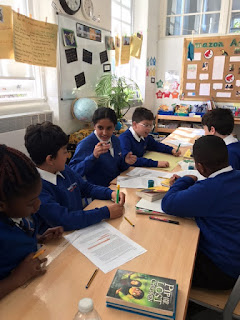Religious Education in Year 6
'End of Life's Journey'
This Autumn term, the Year 6 students have built upon their knowledge of the ways in which different religions celebrate and remember the lives of deceased loved ones.
Below, you can see images from a lesson which involved the students investigating the following question: 'Do all religions have the same beliefs about what happens after we die?'
Within this lesson, the children were placed into groups and conducted research using iPads, research papers and books in order to gain information about how different communities (both religious and non-religious) cope with loss and help people who are bereaved. In doing so, the groups become experts on various communities and presented their findings to the class. Whilst each group presented, the rest of the class recorded notes in their Thinking Journals which developed both their understanding and their ability to identify key facts/information.
The students and teachers found this lesson particularly interesting and had rich conversations about the way in which atheists and Humanists mark the death of a loved one and how these practices relate or differ to those of religious people. Before finishing the lesson, the students considered the idea of symbolism by looking at both the image of a circle and a straight line and discussed how this related to the beliefs of death and reincarnation.
Linden Class student - "I believe I am a Humanist; this is because I believe that when people die, their life comes to a complete end and no part of them continues to live on.'
Birch Class student - "When a person dies, a Humanist ceremony includes readings, music, poems, eulogies and anything that was important to that person - it is a way of saying goodbye to them."













